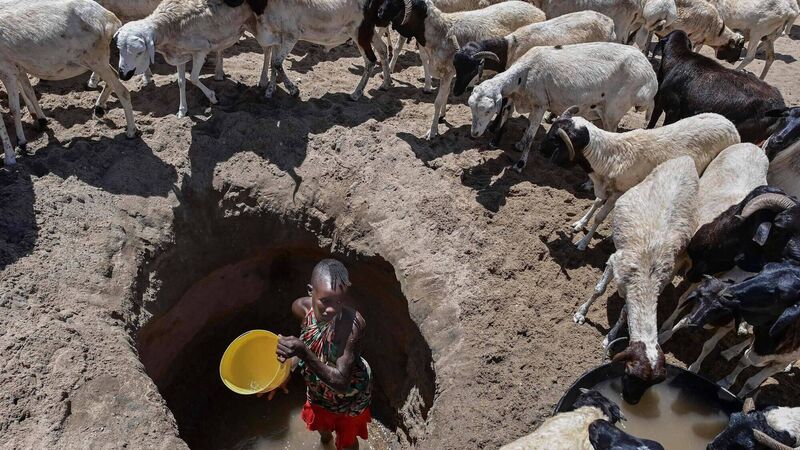Horn of Africa: The developed world must now show solidarity with those on the brink

A young woman from the Turkana community waters goats from a shallow well dug into a dry riverbed at Eliye springs on the western shore of Lake Turkana. Picture: Tony KARUMBA / AFP via Getty Images
THE UN World Food Programme (WFP) and Food and Agriculture Organisation (FAO) recently estimated there are 345m people facing acute food insecurity around the world, with 222m people in need of urgent assistance in the worst-affected countries, and up to 50m on the edge of famine.
The Horn of Africa is once again witnessing some of the most severe levels of hunger, with at least 36m at risk of starvation across Somalia, Kenya, and Ethiopia. This has led to huge numbers displaced from their homes in search of food, with reports of many dying of hunger in transit.










